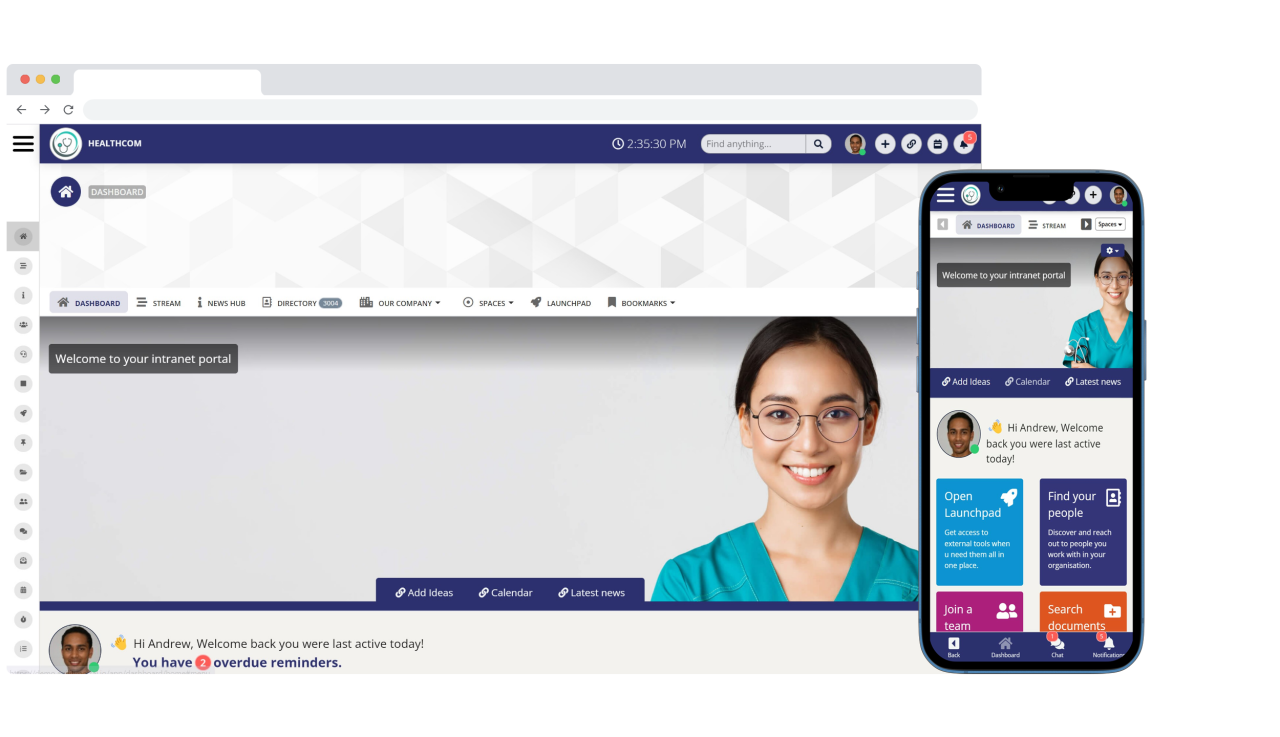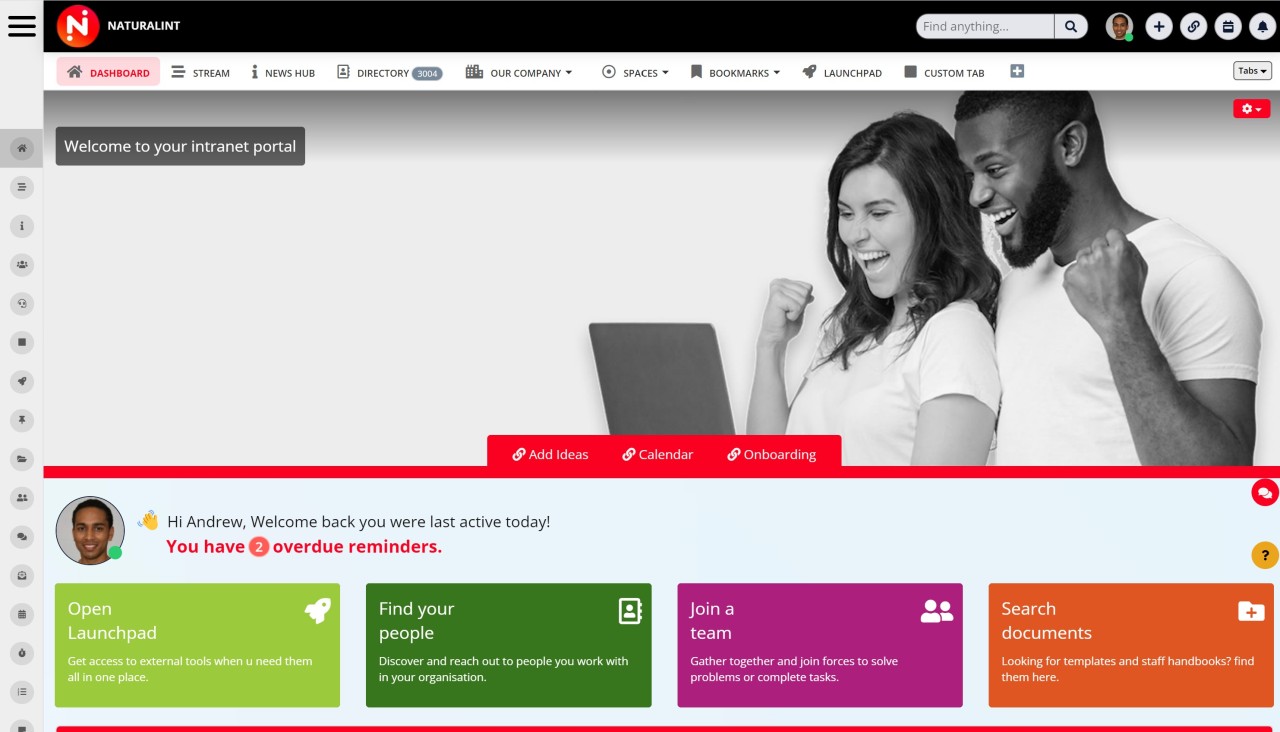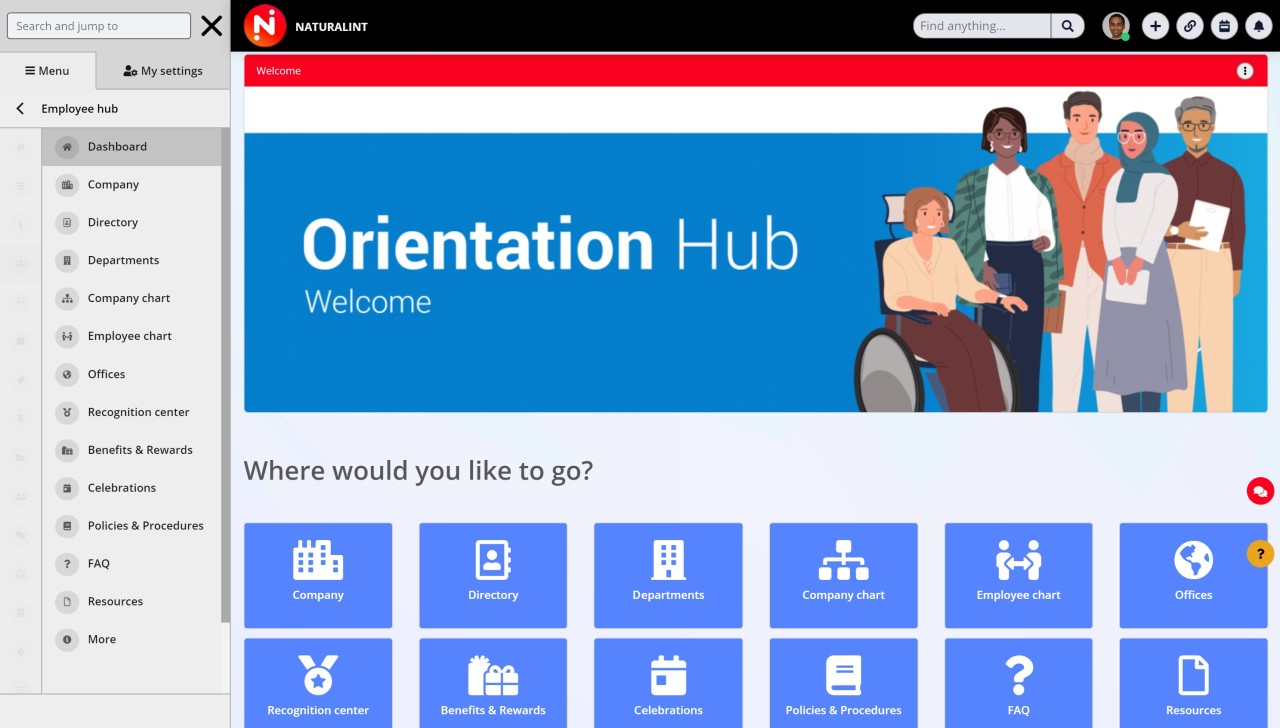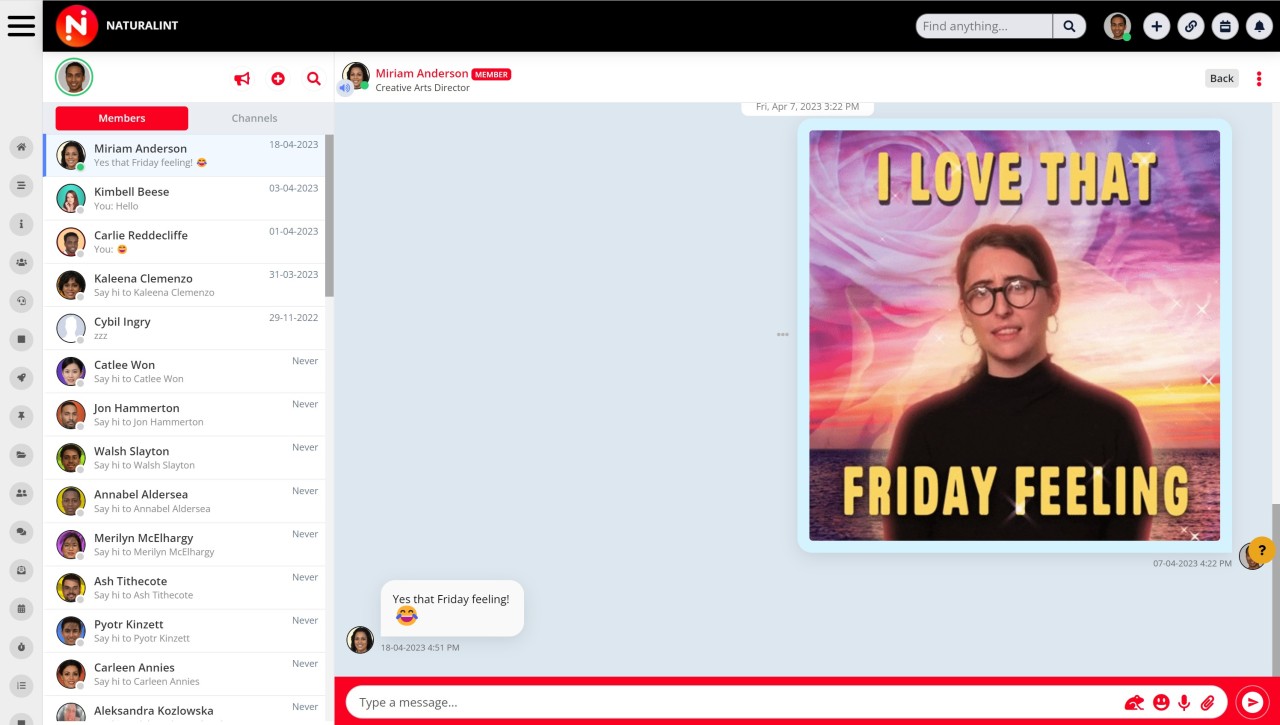Insight Blog
Agility’s perspectives on transforming the employee's experience throughout remote transformation using connected enterprise tools.
12 minutes reading time
(2453 words)
Why Every Company Needs an App: App for Employee Communication
So why every company needs and app? Well if your reading this on your phone then that might be the answer.
So why every company needs an app? Well if your reading this on your phone then that might be the answer.
It wouldn't come as a surprise considering that approximately 6.6 billion individuals are said to own a smartphone. Smartphones have become an integral part of our lives, influencing various aspects.
They serve as a means of communication through calls and texts, provide access to news updates, enable sharing of opinions, facilitate banking transactions, and even allow online shopping. The list goes on and on, extending to the increasing utilization of employee communication apps within the workplace, so you can see why this might be a good question as to why every company needs an app.
A recent study conducted in the UK revealed the following:
- 60% of employees now utilize apps for work-related tasks.
- 71% spend more than two hours per week accessing company information on their mobile devices.
- 70% of employees keep their phones within their line of sight while at work, as reported by CNBC.
Despite these statistics, a significant portion of workers, approximately 59%, feel that their organizations have been sluggish in providing apps designed for the workforce. These conflicting numbers suggest that many companies mistakenly believe that communicating with employees through traditional intranets, emails, or collaborative platforms is sufficient. However, it is evident that this approach falls short.
Consequently, employees, especially the growing number of individuals working remotely due to the COVID-19 crisis, are becoming increasingly frustrated. Why? Because they are unable to interact and access work-related information through the very device they rely on for almost everything else in their lives.
This is where employee communication apps come into play, an App for Employee Communication.
Need an app for employee communication: Try AgilityPortal for 14 days for free no credit card required.
What Exactly is an App for Employee Communication?
Employee communication apps serve as communication tools at their core, but the best ones go above and beyond in terms of functionality. However, a valuable employee app will primarily offer companies a mobile solution to connect with all employees using their personal smartphones or tablets.
By doing so, employee communication apps can establish an effective and secure channel for bridging the gap between dispersed workers. This category encompasses individuals who may not have a corporate email address or regular access to a desktop computer. It includes non-desk workers, remote workers, freelancers, non-contract employees, temporary staff, and others.
With the increasing trend of people working outside the traditional office setup, employee communication apps play a crucial role in providing convenient and mobile access to corporate information and workplace tools. They are designed with practicality and relevance in mind, and excel at fostering alignment and engagement among users.
Why does every company need an App for Employee Communication
Employee communication apps have become increasingly popular in modern workplaces and for good reason. These apps play a vital role in creating a positive workplace culture by fostering effective communication, enhancing collaboration, and promoting employee engagement.
One of the key advantages of mobile employee communication apps is their ability to facilitate seamless and instant communication between team members, regardless of their physical location. Through these apps, employees can easily share information, exchange ideas, and seek assistance, resulting in improved productivity and efficiency. Moreover, the real-time nature of these apps ensures that no one feels left out or disconnected from the team, enhancing inclusivity and a sense of belonging. Considering these benefits, understanding the cost to build an app for employee communication is crucial; it enables businesses to strategically invest in tools that foster company-wide connection and productivity.
Furthermore, employee communication apps promote collaboration among team members. They provide a platform for individuals to collaborate on projects, share feedback, and work together towards common goals. By breaking down silos and encouraging cross-functional collaboration, these apps foster a sense of teamwork and camaraderie among employees. This collaborative spirit leads to increased innovation, as diverse perspectives and ideas can be easily shared and integrated.
Employee communication apps also contribute to employee engagement by providing a channel for recognition and feedback. These apps allow managers and colleagues to publicly acknowledge and appreciate the contributions and achievements of individuals or teams. This recognition not only boosts morale but also motivates employees to continue performing at their best. Additionally, the ability to provide feedback and receive constructive criticism through these apps encourages growth and development, leading to a more engaged and satisfied workforce.
Moreover, employee communication apps can serve as platforms for sharing important company updates, news, and announcements. This helps in fostering transparency and keeping employees well-informed about organizational changes, goals, and initiatives. When employees have access to timely and relevant information, they feel valued and connected to the larger purpose of the organization, thereby strengthening their commitment and loyalty.
In conclusion, employee communication apps have a significant impact on creating a positive workplace culture. By facilitating effective communication, promoting collaboration, enhancing employee engagement, and fostering transparency, these apps contribute to a more cohesive, productive, and satisfied workforce.
Here are 3 good reasons to deploy an Employee Communication App
Deploying an employee communication app can bring numerous benefits to an organization, revolutionizing internal communication and fostering a more connected and engaged workforce. Here are some key advantages of implementing such an app.
1.Provides a positive workplace culture
A positive workplace culture plays a crucial role in fostering strong relationships and collaboration among leaders and employees within an organization. It cultivates loyalty, enhances retention and engagement, and attracts talented individuals. An effective employee communication app can be instrumental in creating and maintaining such a culture by promoting open communication and shared cultural values.
By facilitating open communication, employee communication apps contribute to the development of a dynamic and dialogue-driven environment. These apps break down organizational hierarchies, providing opportunities for all employees, whether remote or frontline workers, to share their perspectives and experiences, both positive and negative. This exchange of ideas and feedback generates a continuous cycle of meaningful conversations, motivating employees and guiding them towards actionable improvements.
Consistent and ongoing communication, facilitated by employee communication apps, is essential for establishing a positive workplace culture. Such communication should flow in multiple directions, ensuring that all employees have access to information, feedback, and the opportunity to contribute. Whether it's sharing company updates, recognizing employee achievements, or addressing concerns, these apps enable effective and inclusive communication that reaches every corner of the organization.
Furthermore, employee communication apps foster a sense of transparency and trust within the workplace. When employees have access to information and feel that their voices are heard, they develop a stronger connection to the organization's goals and values. This, in turn, increases their engagement and commitment to their work.
Here are a few more ways:
- Improved Communication - An employee app can facilitate efficient and transparent communication among team members and departments. It enables employees to share updates, news, and important information easily, fostering a sense of belonging and inclusion. When communication flows smoothly, it enhances collaboration, reduces misunderstandings, and strengthens relationships, leading to a positive workplace culture.
- Enhanced Employee Engagement - An employee app can offer various features to boost employee engagement. It can provide a platform for recognition and rewards, enabling employees to celebrate their achievements and feel valued. Additionally, interactive features such as surveys, polls, and feedback mechanisms allow employees to voice their opinions, contribute ideas, and actively participate in shaping the company culture.
- Access to Resources and Training - By centralizing resources and training materials within an employee app, organizations can empower employees to continuously develop their skills and knowledge. Accessible learning opportunities not only support professional growth but also convey the message that the company invests in its employees' development. This fosters a culture of learning, improvement, and personal growth, leading to a positive and engaged workforce.
- Collaboration and Teamwork - An employee app can provide tools and features that promote collaboration and teamwork. Features like project management, document sharing, and team calendars enable employees to work together effectively, regardless of their physical location. When employees can collaborate seamlessly, it cultivates a sense of unity, trust, and shared purpose, which contributes to a positive workplace culture.
- Transparent and Inclusive Environment - An employee app can facilitate transparency by disseminating information about company goals, strategies, and decisions. This transparency fosters trust and empowers employees to understand the bigger picture, align their efforts, and contribute meaningfully. Moreover, the app can support inclusivity by providing equal access to information, opportunities, and resources, ensuring that every employee feels valued and included, regardless of their role or location.
By promoting open communication, facilitating dialogue, and ensuring that information and feedback flow freely, these apps empower employees and foster an environment of trust, collaboration, and continuous improvement.
Try: Use the top internal communication app to change your company culture.Start your free 14-day trial
2. Employee Communication Apps Foster Engagement
Let's start with the good news: the proportion of workers in the United States who are highly engaged, enthusiastic, and committed to their work and workplace is nearing its highest point ever.
However, the not-so-good news is that this "high" figure stands at a mere 34%.
Conversely, the number of "actively disengaged" workers, those who have negative work experiences, has reached 13%. The remaining 53% fall into the category of "not engaged." These individuals lack a sense of connection to their work and workplace, merely fulfilling the minimum requirements. They would readily accept a slightly better job offer elsewhere.
So, how can employee communication apps make a difference?
Let's take a compelling example. Lisa Nun, the Vice President of Culture Development and Education at TPJ in London, conducted employee engagement surveys for nearly two decades.
Within twelve months of implementing an employee app, the company witnessed an average increase of three points in engagement scores across all categories. And this positive trend has continued ever since.
Impressed by his company's success with the app, Wooldridge is enthusiastic about sharing his insights into fostering mobile engagement. According to him, the overall positivity at TPJ can be directly attributed to the stronger bonds formed among the employees through the use of the app. "An employee app provides a broader and more detailed perspective of the company and the people you collaborate with," he affirms.
Here are a few question:
- Seamless and Instant Communication - Employee communication apps provide a convenient and efficient channel for communication, allowing employees to connect and collaborate in real-time. With features like instant messaging, group chats, and video conferencing, employees can easily share ideas, ask questions, and receive prompt feedback, fostering a sense of belonging and engagement.
- Enhanced Accessibility and Inclusivity - These apps ensure that all employees, regardless of their location or work schedule, can stay connected. Remote workers, field employees, and those working in different time zones can access the communication app from their devices, enabling them to participate actively and feel included in the organization's activities and discussions.
- Strengthened Employee Relationships - By facilitating communication and interactions across different departments and hierarchical levels, employee communication apps help build stronger relationships among colleagues. These platforms provide opportunities for employees to collaborate, share experiences, and build camaraderie, leading to increased engagement and a sense of belonging within the organization.
- Transparent and Timely Information Sharing - Communication apps serve as a central hub for disseminating important information such as company updates, policy changes, and announcements. By providing a transparent and timely flow of information, these apps keep employees well-informed and engaged in the organization's goals, strategies, and initiatives. This transparency fosters trust and a sense of ownership among employees.
- Employee Feedback and Recognition - Many communication apps include features that allow employees to provide feedback, offer suggestions, and recognize their peers' achievements. This two-way communication fosters a culture of open dialogue, empowers employees to contribute their ideas, and recognizes their contributions. Feeling valued and acknowledged positively impacts engagement, motivation, and overall job satisfaction.
Ultimately, it is these human connections, more so than the work itself, that lie at the core of employee engagement.
3. Provide a Single Source of Relevant Content, and a One Stop Shop for Information
How many communication channels do you utilize in your work?
Just today, while seated at my desk, I have received messages through various platforms such as Slack, WhatsApp, email, Facebook Messenger, LinkedIn, and iMessage. Some of these messages were personal in nature, while others were work-related. However, all of them consumed my time and diverted my focus.
Ironically, many of these communication tools were designed to enhance productivity. But have they truly achieved that goal? Particularly in a work setting, it can be incredibly challenging to filter out the noise and locate the crucial information.
However, here's an important distinction: an employee app is not just another channel. In fact, it serves as THE primary channel for accessing work-related information. It consolidates numerous information sources, previously scattered in separate silos, into a single, trusted, streamlined, and relevant platform.
A communication app can greatly assist employees in finding documents more efficiently.
Here are some ways in which it can help:
- Centralized Repository - A communication app often includes a centralized document repository where employees can upload, organize, and access important files. This eliminates the need to search through multiple folders or email attachments, providing a single source of truth for documents.
- Advanced Search Functionality - These apps usually offer robust search capabilities, allowing employees to quickly locate specific documents by using keywords, file names, or relevant tags. This saves time and reduces frustration associated with manual document searches.
- Categorized Document Libraries - Communication apps often categorize documents into different libraries or folders based on topics, projects, or departments. This categorization makes it easier for employees to navigate through relevant sections and locate the specific documents they need.
- Version Control - With a communication app, document version control becomes simpler. It allows employees to upload new versions of files while preserving previous versions. This ensures that everyone has access to the most up-to-date information while still retaining historical versions for reference.
- Notifications and Updates - These apps can send notifications or alerts when new documents are added or existing ones are updated. Employees can stay informed about any changes or additions, ensuring they have the latest information at their fingertips.
- Collaborative Features - Communication apps often include collaboration tools such as real-time document editing, commenting, and sharing. This promotes teamwork and allows multiple employees to work on the same document simultaneously, enhancing productivity and streamlining workflows.
A communication app simplifies document management by providing a centralized repository, advanced search functionality, categorized libraries, version control, notifications, and collaborative features. This helps employees find the documents they need quickly and efficiently, improving productivity and reducing the time spent on manual searches.
Categories
Blog
(2592)
Business Management
(318)
Employee Engagement
(205)
Digital Transformation
(172)
Intranets
(119)
Growth
(118)
Remote Work
(61)
Sales
(48)
Collaboration
(37)
Culture
(29)
Project management
(29)
Customer Experience
(26)
Knowledge Management
(21)
Leadership
(20)
Comparisons
(5)
Ready to learn more? 👍
One platform to optimize, manage and track all of your teams. Your new digital workplace is a click away. 🚀
Free for 14 days, no credit card required.
















